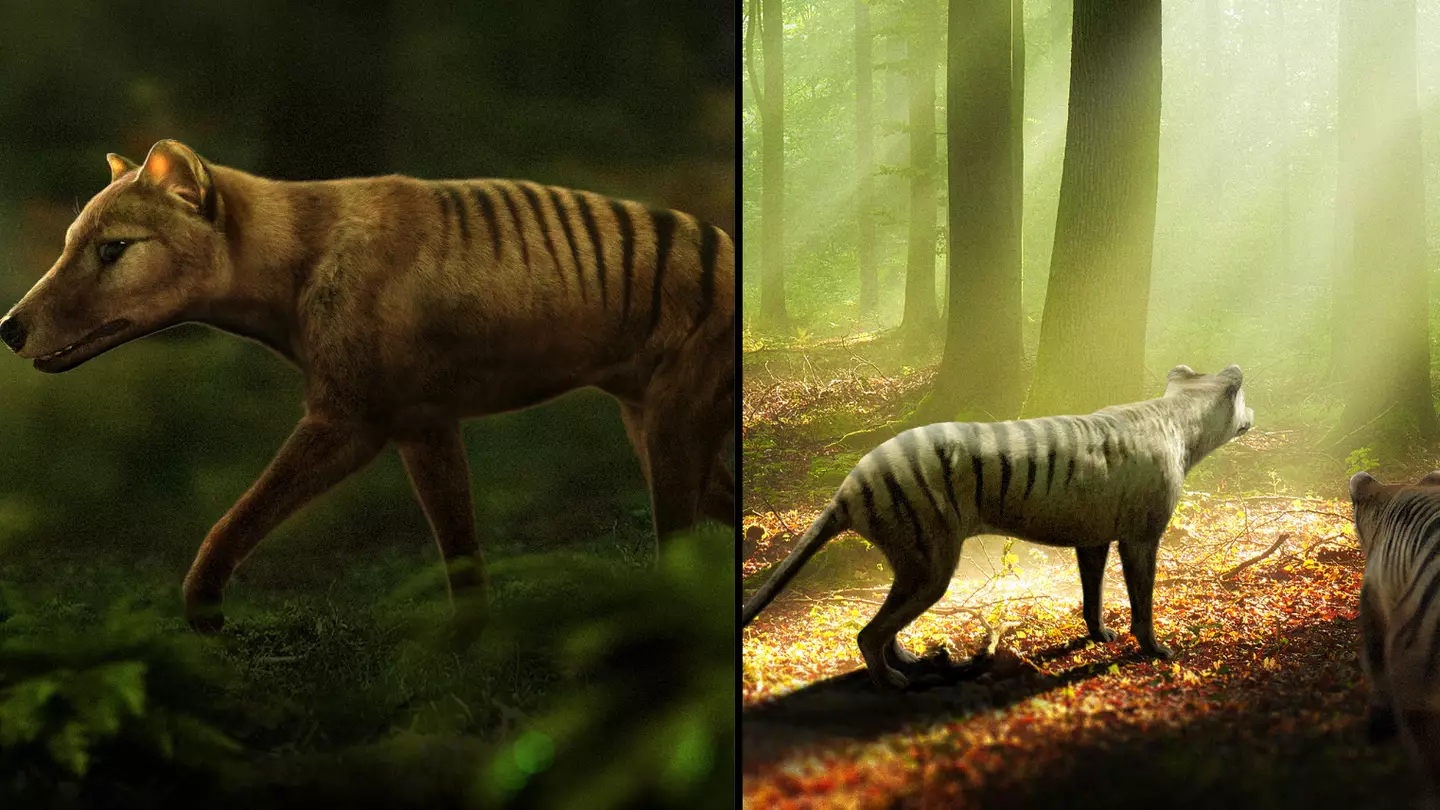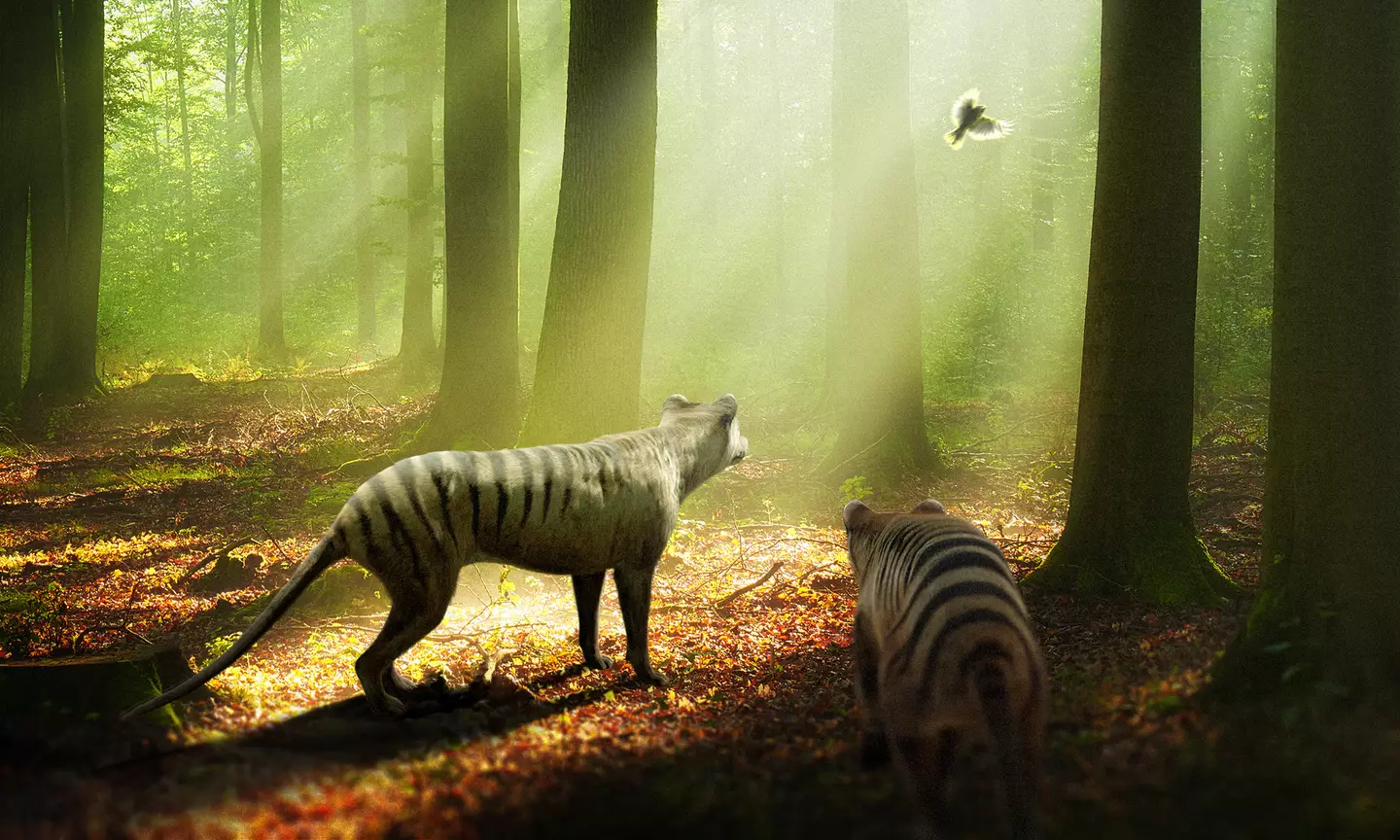
Researchers from the University of Melbourne, along with the company Colossal Biosciences, are embarking on a groundbreaking project to bring back the Tasmanian tiger.
The animal has been extinct since 1936 and it would be a massive undertaking to revive it from the archives.
Thylacine Integrated Genetic Restoration Research (TIGRR) is led by University of Melbourne marsupial evolutionary biologist professor Andrew Pask who received a hefty $5 million donation from Wilson Family Trust.
Advert
Head of the trust, Russell Wilson, became deeply invested in Pask’s research into genome sequencing after watching YouTube videos of the scientist.
Dr Pask began exploring the possibility of de-extinction by first observing how intact museum specimen’s genomes were and, to his delight, found they were in ‘great shape’.

This led Pask to resurrect the function of a single Tasmanian tiger gene in a mouse embryo in 2005.
Advert
He told LADbible: “It was the first time anything like this had been done - so I have always been driven by the technology to push what we can do.
"Then once the technology became available to consider a project of this scope its been an absolute priority of my research.”
The professor became extremely passionate about bringing back the thylacine, which he notes was vital to balancing Tasmania’s ecosystem.
The apex predator killed off weak animals responsible for spreading deadly diseases among the animal kingdom.
Advert
He said: "The thylacine was the only apex predator in the Tasmanian ecosystem, so no other animal was able to fill its place once it was lost. We have already seen the impacts of this in the Tasmanian devil population, which was almost wiped out by a facial tumour disease.”
Dr Pask added that the world has already experienced the ‘profound impacts’ of its extinction; however, he is ‘confident that a well-managed reintroduction program would have huge benefits for that entire ecosystem by restoring that balance once more’.
He's explained to LADbible how the team plans to bring the animal back from the dead.
"We have an amazing ability to sequence and assemble damaged DNA fragments from museum specimens and remains," he said. "We have made huge advances in stem cell biology and our ability to make animals from single cells.
Advert
"And we have made giant leaps forward in our ability to edit DNA. All of these things combined make a project like this feasible today."

But once brought back from de-extinction, founder and CEO of Colossal Biosciences Ben Lamm, who is working alongside Pask and leading geneticist George Church, aims to preserve the species through marsupial-focused conservation and gestational technologies.
He said: “Colossal is working on full-stage artificial wombs that can help in full ex-utero development all the way from embryos. These gestational technologies alone will be transformational for marsupial conservation.”
Advert
Lamm added that marsupial conservation efforts would also prevent the extinction of the Tasmanian devil by creating an exo-pouch, which will help the development of babies post-birth.
He said: “The Tasmanian devil gives birth to 20 or 30 joeys. However, the mother has only four nipples, so only a handful of babies survive.
“Our exo-pouch we are developing for the thylacine project could be incredibly helpful to conservationists working with the Tasmanian devils to take those additional 20+ joeys and give them a place to incubate further.”
However, the thylacine isn’t the only animal Colossal is looking to resurrect, as Lamm said his company is about four to six years away from bringing back the woolly mammoth.
Currently, 35 scientists are working on this project, with two additional labs focused on the species.
Researchers have already managed to secure over 50 mammoth genomes and sequence the entire Asian and African elephant genomes.
Lamm said: “Our stem cell reprogramming team is working to establish Asian elephant IPSCs [Induced Pluripotent Stem Cells], completed numerous rounds of computational analysis and comparative genomics to identify and confirm the edits we are making, and we have already started making those edits in cells and testing them.”
Featured Image Credit: Supplied.Topics: News, Science, Environment, Animals
